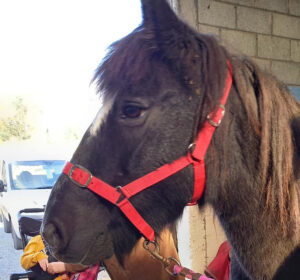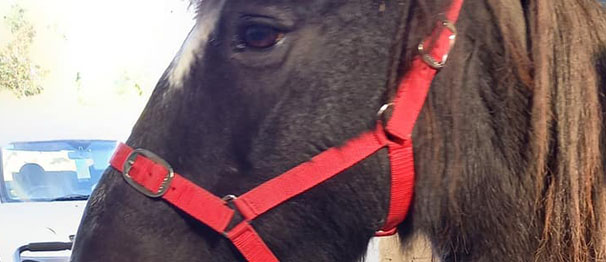What Does Quality Equine-Assisted Services Look Like?
-
29 May, 2025
-
9:43 am
-
How to Recognize a Professional and Effective Equine-Assisted Services Program
Equine-Assisted Services — also known as horse therapy — is gaining recognition around the world for its power to improve mental health, emotional regulation, motor skills, confidence, and even trauma recovery. But as the popularity of this field grows, so does the number of programs claiming to offer “equine therapy.” Not all of them are created equal.
If you are a parent, caregiver, or professional seeking services for a child or adult — especially someone with additional needs — it’s important to know what makes a quality Equine-Assisted Services program truly effective. Here’s how to tell the difference between a program built around the client’s well-being — and one that’s just riding on the trend.
1. It’s Not Just About Riding
Let’s start by clearing up a common misunderstanding: Equine-Assisted Services is not the same as horse riding.
In fact, in many professional Equine-Assisted Services sessions, nobody rides the horse. Instead, participants interact with the animal from the ground — grooming, leading, observing, or simply being present. While therapeutic riding exists as a legitimate discipline, it is only one part of a much broader field.
A quality program makes it clear from the outset what kind of service is being offered:
- Therapeutic Horse Riding: Can support physical coordination, balance, and confidence in people with physical or cognitive challenges.
- Equine-Assisted Services (EAS): Often led by mental health professionals; uses horse interaction to explore trauma, behavior, social anxiety, or emotional dysregulation.
- Equine-Assisted Learning (EAL): Focuses on developing life skills, such as communication, self-awareness, or emotional resilience — often delivered by certified coaches or facilitators.
A good center will not just offer “horse therapy” as a vague activity. They will be clear and specific about their approach, the professionals involved, and the expected outcomes.
2. The Professionals Are Actually Qualified
Horse experience alone does not make someone qualified to lead Equine-Assisted Services sessions. Nor does a background in psychology or education automatically mean someone can run EAS. You need both.
In a quality program:
- There is always at least one trained mental health, education, or coaching professional involved.
- The facilitators have certifications in Equine-Assisted Services (EAS) through a reputable training body.
- Staff participate in ongoing professional development and are familiar with safeguarding, ethics, and trauma-informed practice.
- Horse welfare is prioritized by trained equine specialists who know how to read, handle, and support therapy horses safely.
3. The Horses Are Carefully Selected and Supported
Not all horses are suited to Equine-Assisted Services work. The best programs carefully choose horses for their temperament, tolerance, and sensitivity.
Look for a program where:
- The horses are not overworked or used in back-to-back sessions.
- Each horse has a rest schedule and time off.
- Sessions are monitored for equine stress signals — ears pinned back, avoidance, tail swishing, etc.
- Horses are treated as partners, not props. Their reactions are observed and respected, not ignored or corrected harshly.
Meet Realtog — Our Little Star

Let us introduce you to Realtog (pronounced “Rail-togue”), whose name means little star in Irish — and he more than lives up to it.
Realtog is a 13hh pony in his mid-20s, and although his breeding is unknown (he arrived as a surprise foal shortly after his mother was purchased), his personality shines bright. He’s been with the same loving family for his entire life and is now semi-retired from Pony Club and other fun activities. But Realtog is not done working — he still plays an important role in our Therapeutic Horse-Riding sessions at Horses Connect.
He is wise, reliable, and endlessly patient. Unlike some horses that love fuss and attention, Realtog prefers a more low-key connection. He’ll do just about anything for a treat, but he values calm presence over noisy affection — making him ideal for clients who need space, gentle grounding, or time to build trust.
Realtog reminds us that effective Equine-Assisted Services aren’t always dramatic — sometimes, it’s quiet, steady, and rooted in consistency.
4. The Focus Is on the Client, Not the Activity
A session isn’t a riding lesson, nor is it a pony club. In a professional Equine-Assisted Services session, the emotional, physical, and psychological needs of the participant come first.
This means:
- Each session is adapted to the goals and abilities of the client.
- Sessions are structured, with intentional activities and reflection time.
- Safety is always prioritized — both emotional and physical.
- Parents or caregivers are kept informed of progress and involved where appropriate.
5. There’s Evidence of Impact — Not Just Testimonials
A strong program doesn’t rely on anecdotes alone. Look for evidence such as:
- Partnerships with schools, health professionals, or community organizations.
- Outcome-based tracking (e.g., reports on improvements in communication, anxiety levels, or school attendance).
- Staff involvement in research or continuing education.
- References to evidence-based models such as Eagala, PATH, or Equine-Facilitated Wellness.
6. The Environment Feels Safe and Inclusive
The moment you visit a reputable Equine-Assisted Services center, you’ll sense a difference. These spaces are designed to be:
- Welcoming to people of all backgrounds and abilities.
- Non-judgmental, where everyone is treated with respect and dignity.
- Sensory-aware, especially important for clients on the autism spectrum or with PTSD.
- Clean, calm, and organized — not chaotic, noisy, or overstimulating.
Final Thoughts: Trust Your Instincts
When exploring Equine-Assisted Services for yourself or a loved one, you don’t need to be an expert in horses or psychology. Just ask questions. Notice how the staff interact with you — and with the horses. Observe the atmosphere. Ask about training, structure, and goals.
If something feels off or vague, it probably is. But when you find a quality program — where empathy, ethics, and expertise align — you’ll discover how profoundly healing the presence of a horse can be.
Curious to learn more? Visit our Therapy Programs page or get in touch — and maybe even meet Realtog for yourself.

